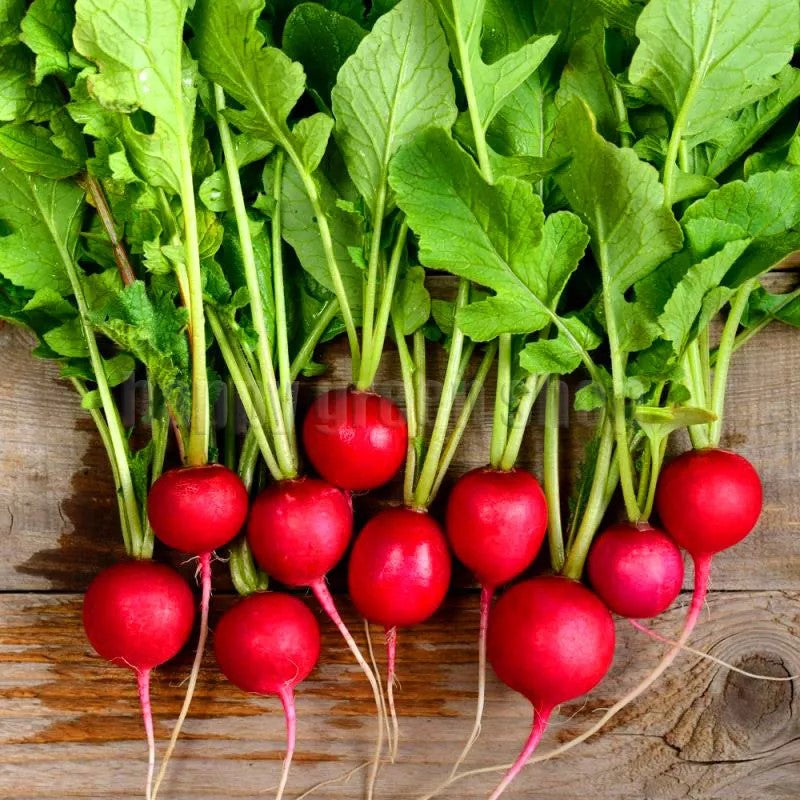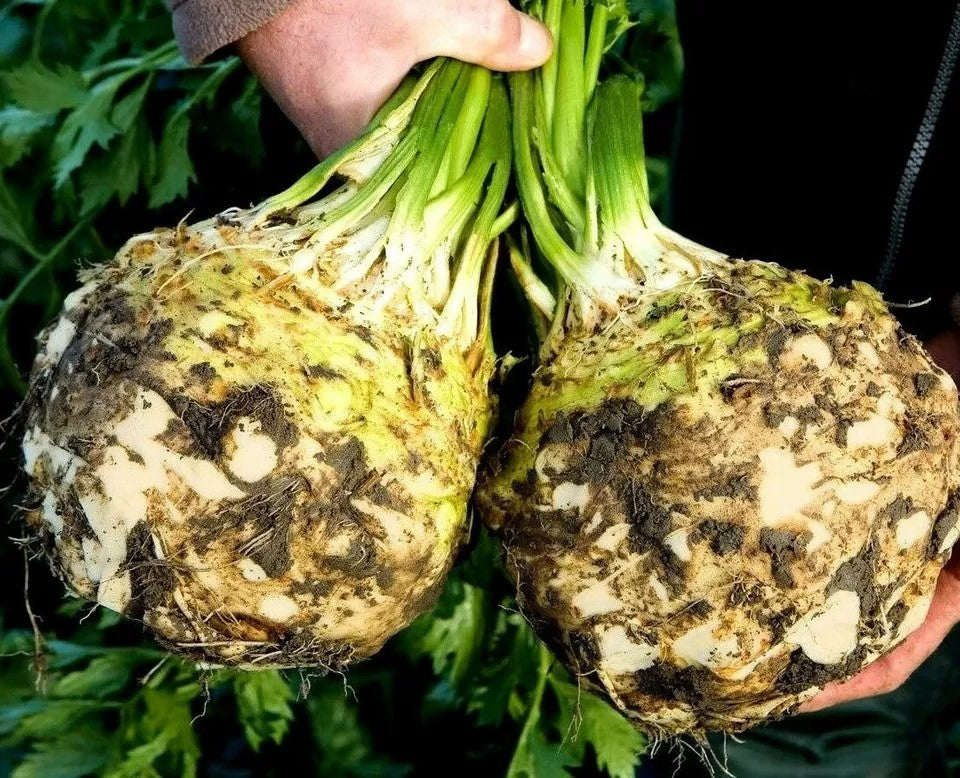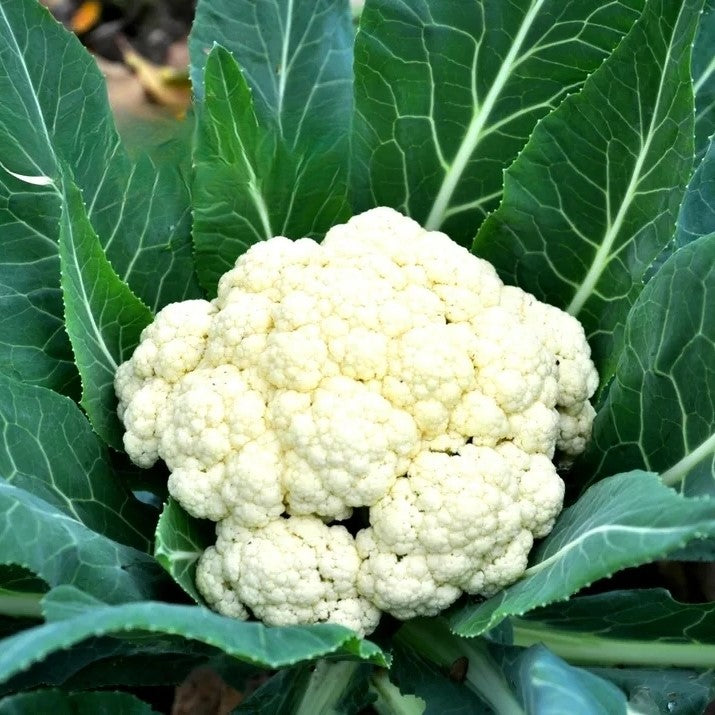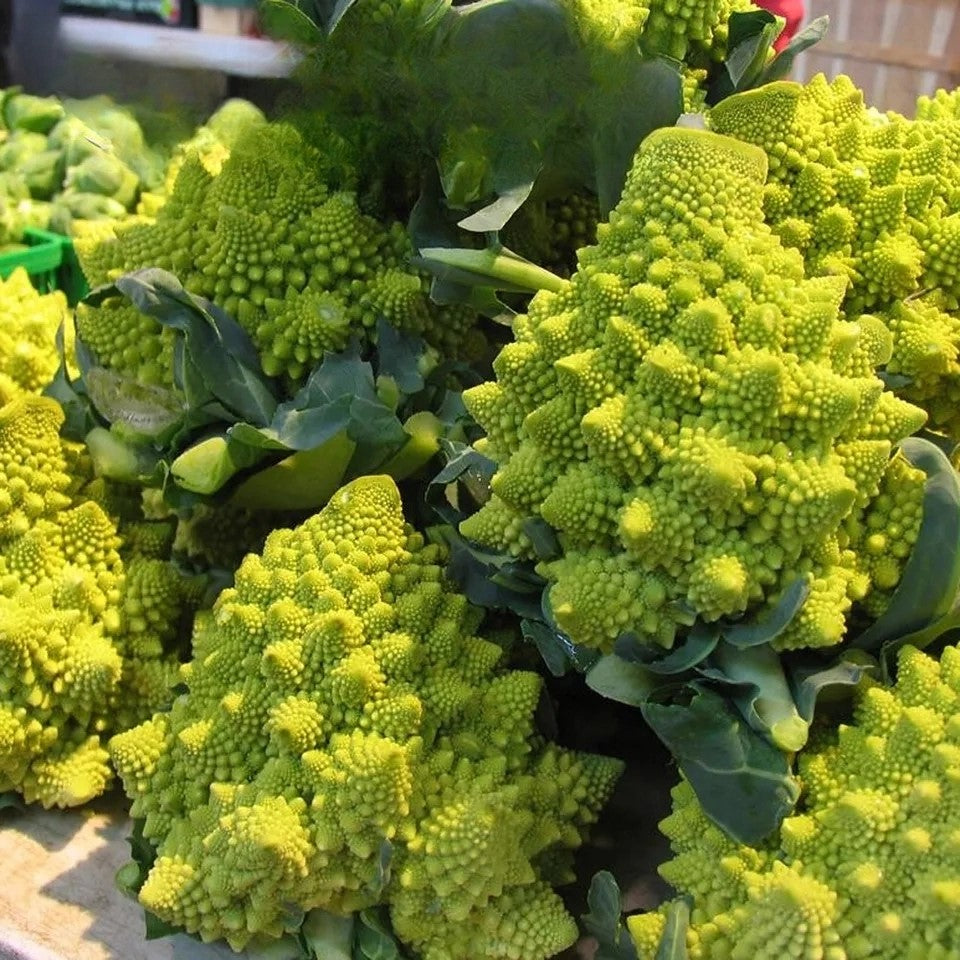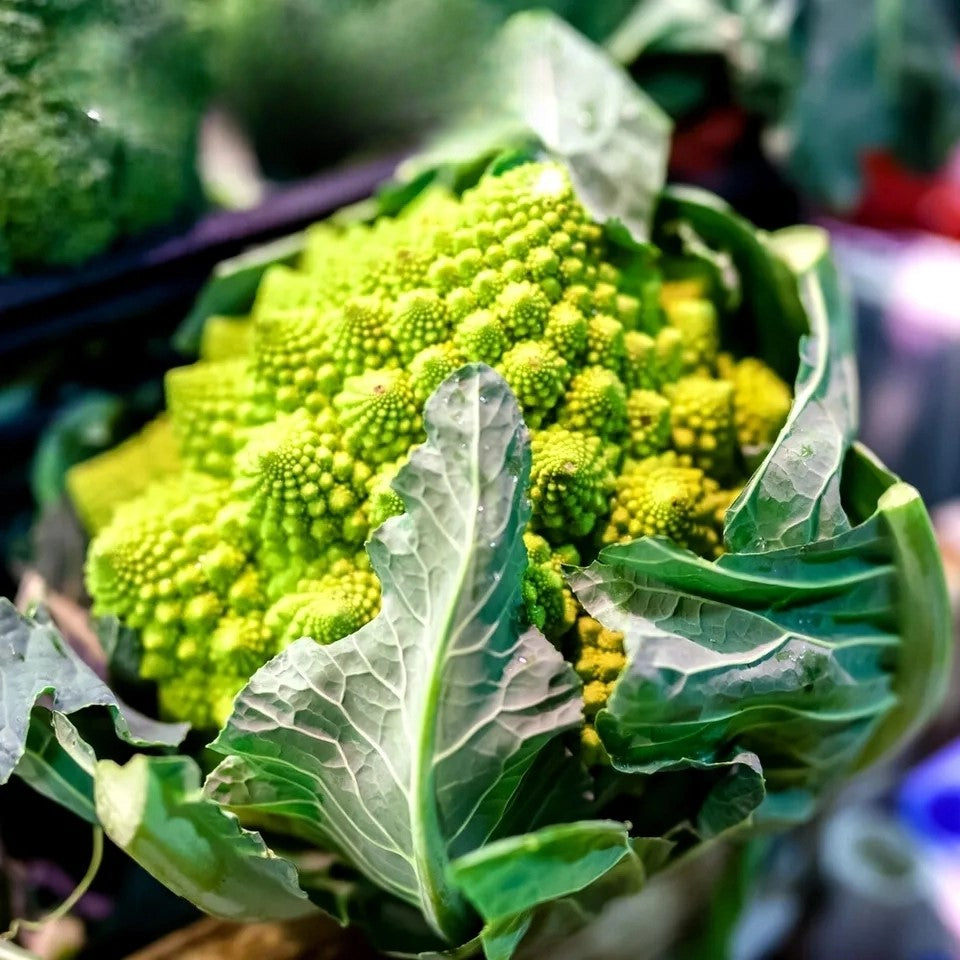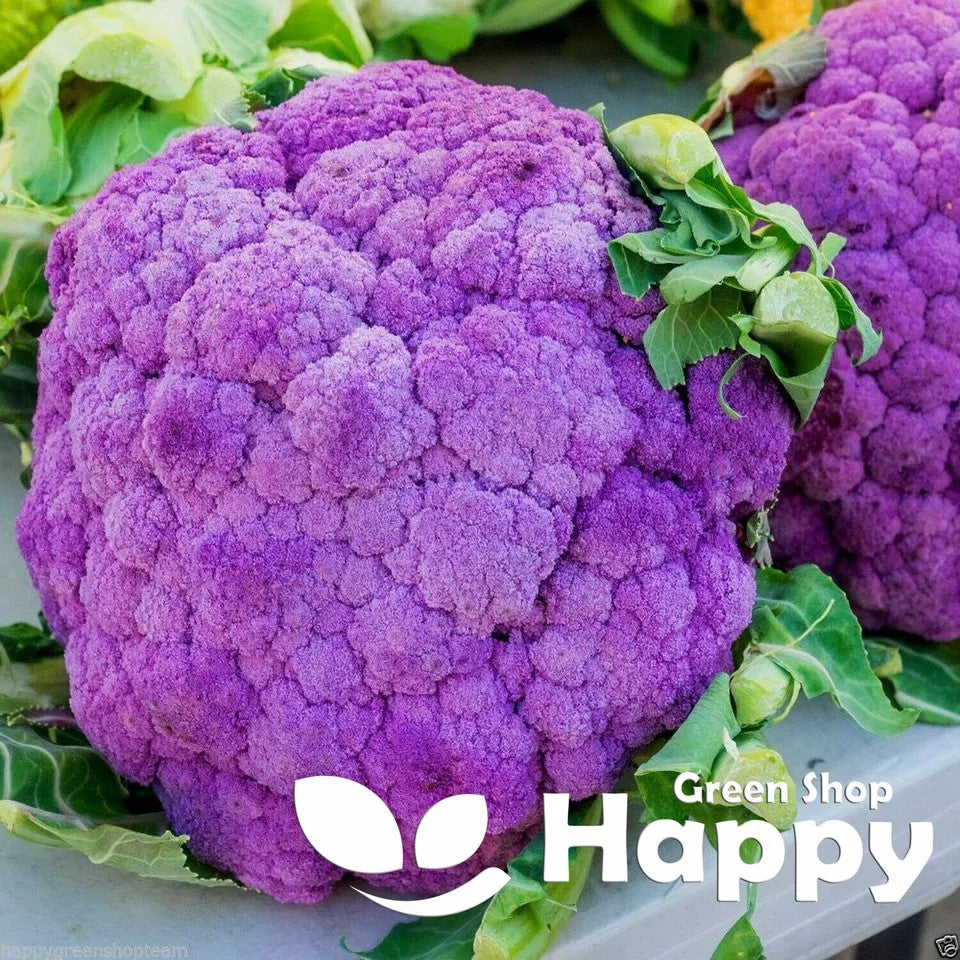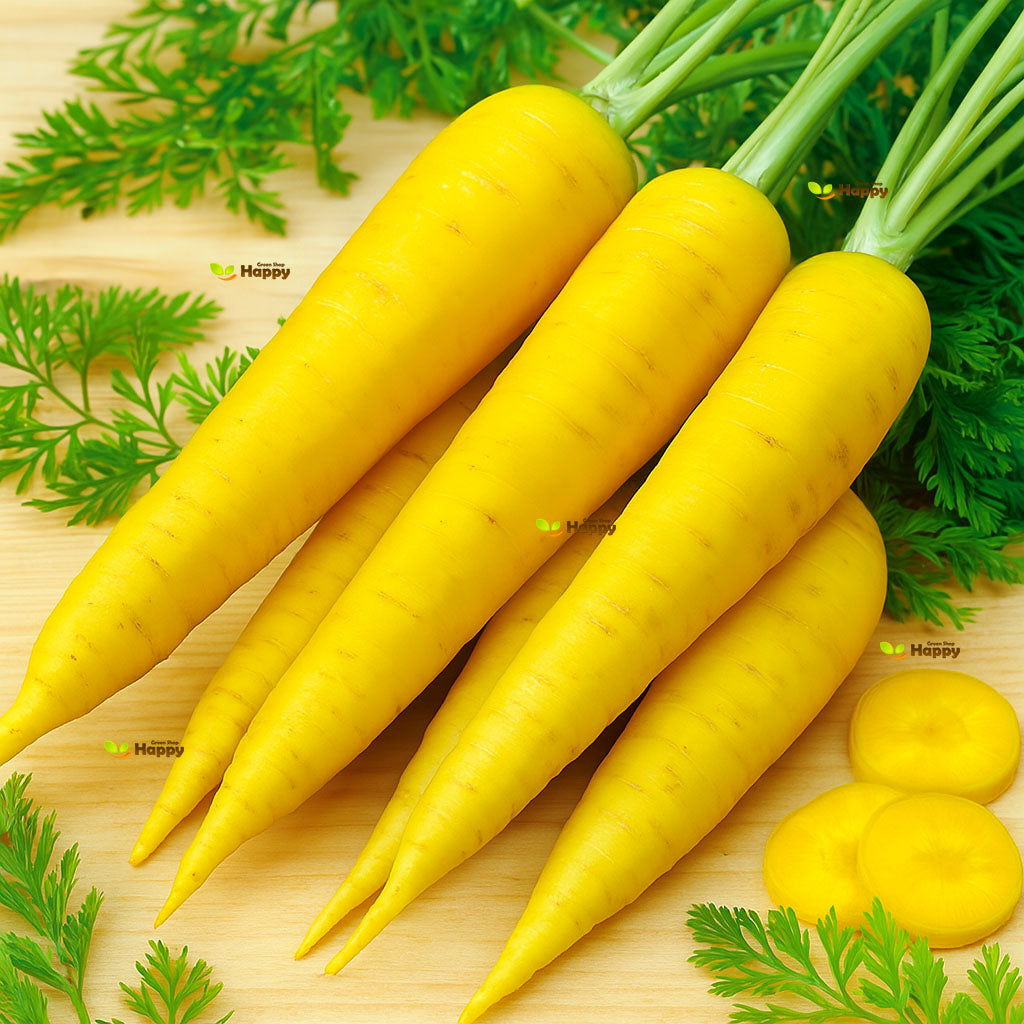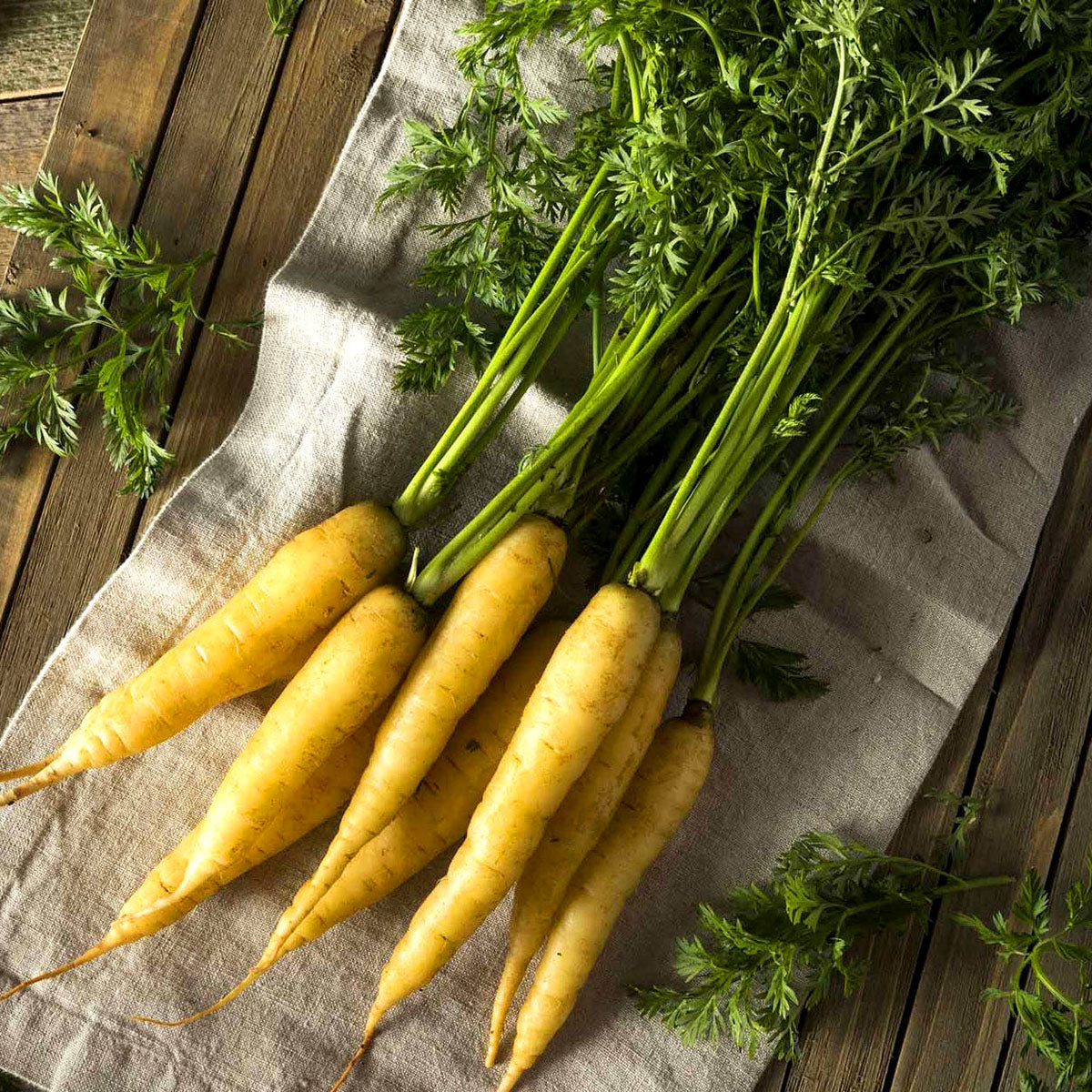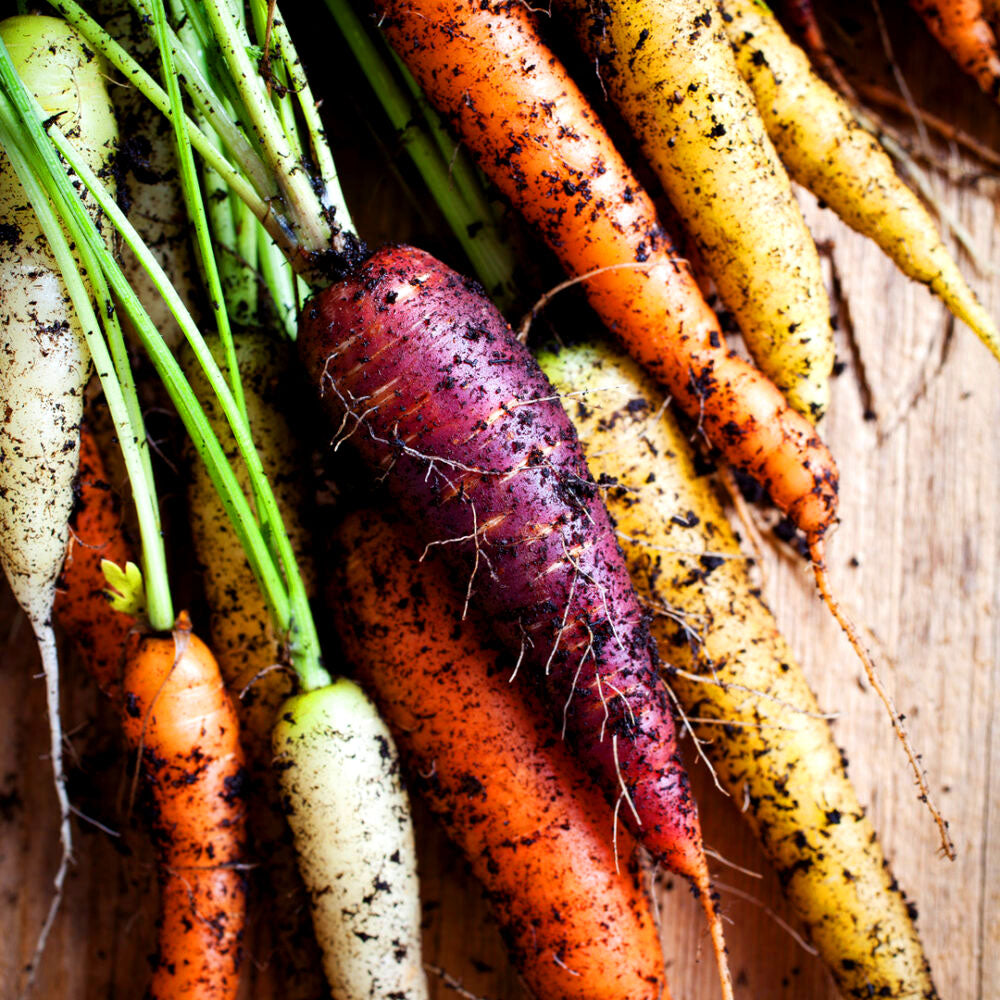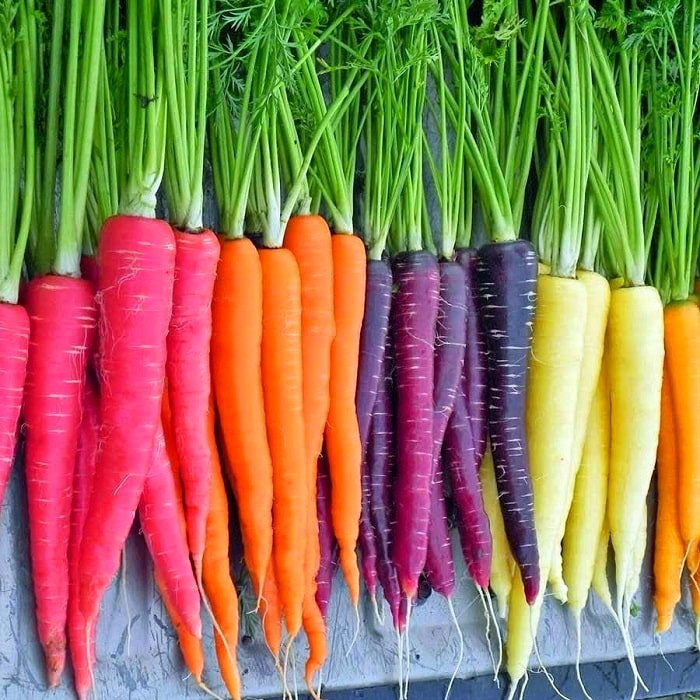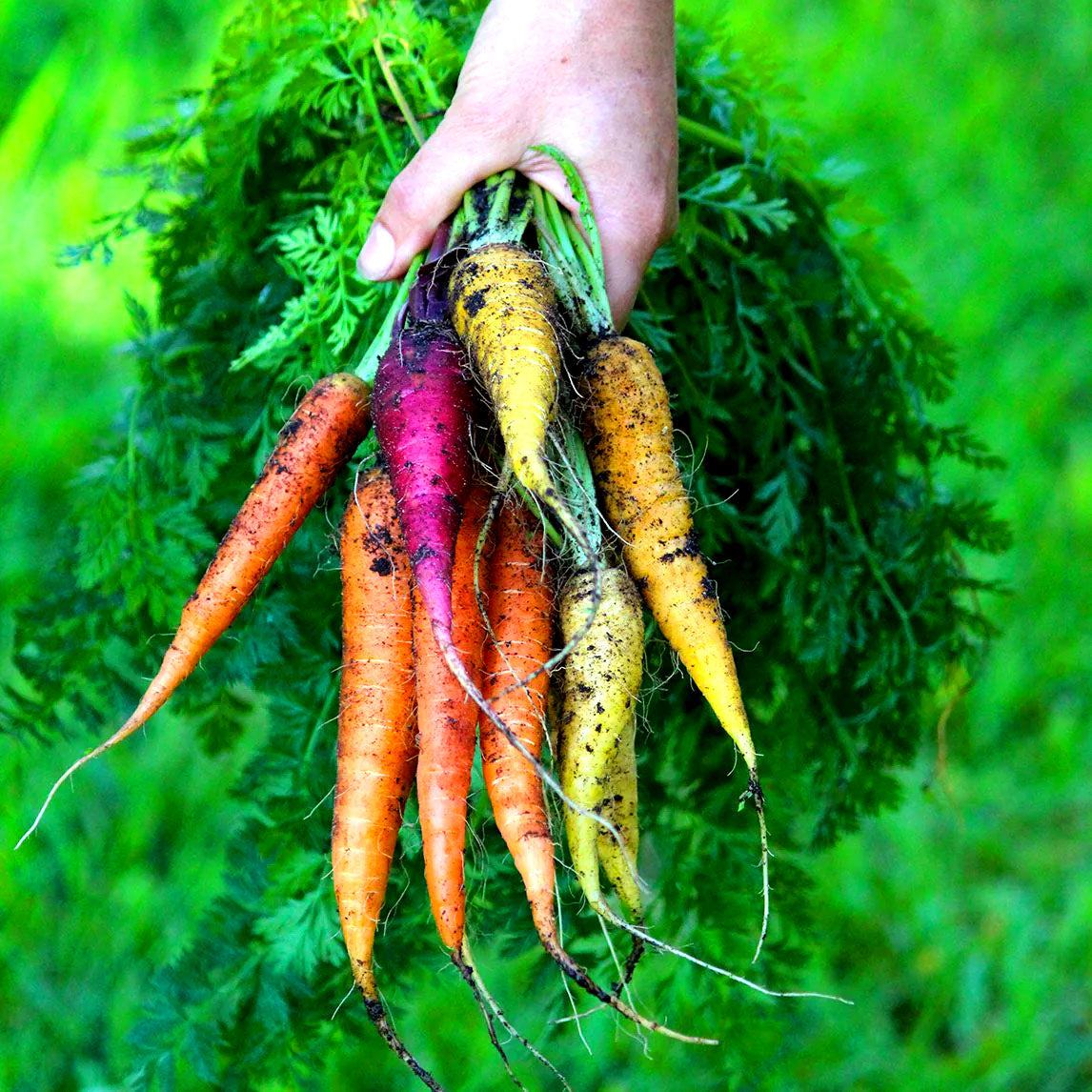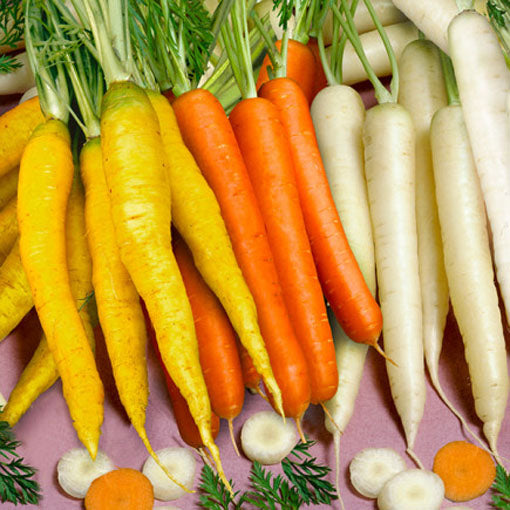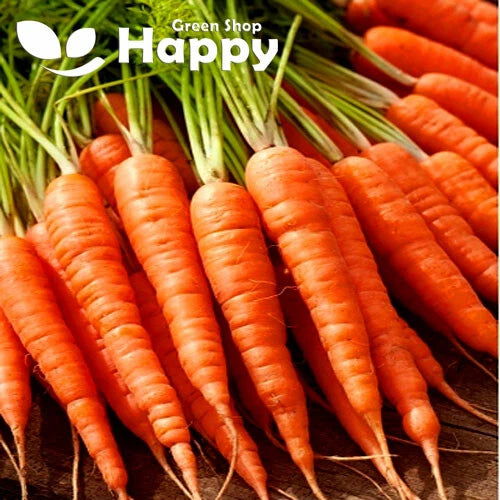Sort by:
225 products
225 products
Celeriac ‘Albin’ – Seeds (Apium graveolens)
Celeriac ‘Albin’ is a dependable variety producing smooth, round roots with creamy white flesh and excellent flavor. Known for its tender texture and mild, nutty taste, this versatile root vegetable is perfect for mashing, roasting, soups, and salads. A slow-growing but hardy crop, it thrives in cooler climates and stores well through winter.
How to Grow
-
Sow indoors: February – April in trays or modules at 18–20°C.
-
Transplant outdoors: May, spacing 30 cm apart in rows 40 cm apart.
-
Prefers fertile, moisture-retentive soil in full sun.
-
Keep well-watered during dry spells to encourage large, smooth roots.
Key Features
-
Smooth, round roots with white flesh
-
Nutty, mild flavor for versatile cooking
-
Good storage qualities for winter use
-
Reliable variety for cool climates
Ideal For
-
Mashing, roasting, and soups
-
Winter storage and seasonal dishes
-
Home gardens and allotments
Sowing & Harvest
-
Sow: February – April
-
Harvest: October – December
Quick Tip
Remove side shoots during the season to focus the plant’s energy on swelling the root.
Cauliflower 'Delta' – Seeds (Brassica oleracea)
Cauliflower 'Delta' is a high-yielding, early-maturing variety producing large, compact, creamy-white heads. Its tender curds and mild flavor make it ideal for steaming, roasting, soups, or fresh in salads.
Reliable and easy to grow, 'Delta' thrives in both home gardens and allotments, offering consistent quality and excellent resistance to common diseases.
How to Grow
-
Sow indoors: February – April
-
Transplant outdoors: April – June
-
Depth: 0.5–1 cm
-
Spacing: 40–50 cm between plants, rows 60–70 cm apart
-
Position: Full sun, sheltered from strong winds
-
Soil: Fertile, well-drained, rich in organic matter
-
Watering: Keep soil consistently moist, avoid water stress
Key Features
-
Early-maturing variety with large, compact, creamy-white heads
-
Mild, tender flavor perfect for steaming, roasting, and soups
-
High-yielding and reliable growth
-
Excellent resistance to common cauliflower diseases
-
Suitable for home gardens, allotments, and small-scale cultivation
Harvest
-
Harvesting period: June – September
-
Pick heads when compact and firm for best flavor and storage.
Short Tip
Tie outer leaves over the developing heads to protect from sunburn and maintain whiteness.
Cauliflower 'Romanesco Natalino' – Seeds (Brassica oleracea)
Cauliflower ‘Romanesco Natalino’ is an extraordinary Italian heirloom, admired for its striking spiral, lime-green heads with a unique fractal pattern. More than just a showpiece, this variety is nutritious, delicious, and versatile – offering a slightly nutty, delicate flavor that works well roasted, steamed, or enjoyed raw in salads. Highly ornamental yet productive, it’s a standout addition to any vegetable garden.
How to Grow
-
Sow indoors: February – May in seed trays or pots.
-
Sow outdoors: May – June, directly into well-prepared soil.
-
Transplant: Harden off young plants and set them 60 cm apart in fertile ground.
-
Position: Full sun, rich, firm soil with good drainage.
-
Care: Keep soil consistently moist and protect young plants from pests.
Key Features
-
Stunning lime-green spiral florets
-
Mild, nutty flavor – more delicate than standard cauliflower
-
Traditional Italian variety
-
Attractive and productive crop
Ideal For
-
Kitchen gardens and allotments
-
Chefs and home cooks looking for something unique
-
Roasting, steaming, or eating raw
-
Eye-catching centerpiece in vegetable beds
Sowing & Harvest
-
Sow: February – June
-
Harvest: September – November
Quick Tip
For the best curds, ensure consistent watering and feed with a high-potassium fertiliser as heads develop.
Cauliflower ‘Di Sicilia Violetto’ Seeds (Brassica oleracea)
Bring color and flavor to your garden with Cauliflower ‘Di Sicilia Violetto’ (Brassica oleracea). This traditional Italian heirloom produces striking purple heads with a delicate, nutty flavor, perfect for steaming, roasting, or adding to vibrant salads. Easy to grow and highly nutritious, it’s a standout choice for gardeners who love unique vegetables.
How to Grow
-
Sow seeds indoors from early spring, or directly outdoors after frost risk has passed.
-
Use fertile, well-drained soil in full sun.
-
Sow seeds 0.5–1 cm deep and thin seedlings to 45–60 cm apart.
-
Keep soil consistently moist and protect young plants from pests.
-
Harvest heads when firm, tight, and brightly colored.
Key Features
-
Striking purple cauliflower with nutty flavor
-
Traditional Italian heirloom variety
-
Nutritious and packed with antioxidants
-
Suitable for steaming, roasting, and fresh dishes
-
Reliable crop for vegetable gardens and allotments
Ideal For
-
Home gardens, allotments, and raised beds
-
Cooking, steaming, roasting, and vibrant salads
-
Gardeners who enjoy growing heirloom vegetables
-
Adding color and nutrition to the kitchen garden
Sowing
-
Best time: Early spring indoors or late spring outdoors
-
Depth: 0.5–1 cm
-
Spacing: 45–60 cm apart
-
Prefers full sun and fertile, well-drained soil
Quick Tip
-
Blanching isn’t necessary with this variety—the purple heads naturally keep their vibrant color until cooking.
Carrot Solar Yellow – 300 Seeds (Daucus carota) Heirloom
Description:
Grow bright, sweet carrots with Carrot Solar Yellow (Daucus carota) Heirloom. This heirloom variety produces vibrant golden-yellow roots with a tender texture and mild, sweet flavor. Compact and easy to cultivate, Solar Yellow carrots are perfect for salads, roasting, and fresh snacking. Ideal for home gardens, raised beds, and container planting, they provide reliable harvests and a splash of color to your vegetable patch.
Key Features
-
Vibrant golden-yellow heirloom carrots
-
Sweet, tender, and flavorful roots
-
Suitable for salads, roasting, and fresh eating
-
Easy to grow and maintain
-
Heirloom variety with reliable harvests
Ideal For
-
Kitchen gardens and raised beds
-
Container planting for home gardeners
-
Fresh eating, salads, and culinary use
-
Heirloom vegetable enthusiasts
Sowing & Growing
-
Sow Outdoors: March–June
-
Germination: 10–20 days at 15–20°C
-
Spacing: 3–5 cm between plants in rows 25–30 cm apart
-
Light: Full sun
-
Soil: Loose, well-drained, fertile soil
Care Tips
-
Keep soil consistently moist during germination
-
Thin seedlings to avoid overcrowding
-
Mulch to retain moisture and suppress weeds
-
Harvest when roots reach desired size
Carrot Rainbow Mix – Seeds (Daucus carota)
Add a splash of color to your garden with Carrot Rainbow Mix, a vibrant assortment of heirloom carrots in shades of purple, red, yellow, orange, and white. Beyond their eye-catching hues, these carrots are sweet, crunchy, and full of flavor, perfect for fresh eating, roasting, or juicing. This mix is ideal for home gardeners who want a fun, decorative, and nutritious harvest.
How to Grow
. Sow outdoors: March – June, 1–2 cm deep in rows 25–30 cm apart
. Thin seedlings to 5–8 cm apart for proper root development
. Prefers full sun and loose, well-drained soil free of stones
. Keep soil consistently moist to ensure tender, sweet roots
. Harvest: 8–12 weeks depending on color and size
Key Features
. Heirloom carrot mix with vibrant, multicolored roots
. Sweet, crunchy, and full of flavor
. Perfect for fresh eating, roasting, juicing, or garnishing
. Easy-to-grow variety for home gardens
. Adds visual interest to vegetable beds and plates
Ideal For
. Family gardens and small allotments
. Colorful, fresh summer salads and vegetable dishes
. Juicing, roasting, and creative culinary uses
. Gardeners seeking fun and decorative vegetables
Sowing & Harvest
. Sow: March – June
. Harvest: June – September
Quick Tip
Thin carrots early and regularly to allow roots space to grow fully and develop uniform shapes.
Carrot 'Rainbow' F1 – Seeds (Daucus carota)
Carrot 'Rainbow' F1 brings a splash of vibrant color to your garden and plate with its mix of purple, red, yellow, white, and classic orange roots. This hybrid variety combines ornamental beauty with excellent flavor and nutrition, making it perfect for salads, roasting, or snacking fresh.
Uniform in size and shape, these carrots grow long and smooth with a sweet, crunchy texture. Ideal for gardeners who want both yield and variety in a single sowing.
How to Grow
-
Sow outdoors: March – July
-
Sowing depth: 1 cm
-
Spacing: Thin seedlings to 5–8 cm apart
-
Row spacing: 25–30 cm
-
Position: Full sun
-
Soil: Loose, sandy, well-drained soil free from stones
-
Care: Keep soil moist and thin regularly for best results
Key Features
-
F1 hybrid mix of colorful carrots: purple, red, yellow, white, and orange
-
Uniform, smooth roots with sweet, crunchy flavor
-
Adds nutrition and color to meals
-
Great for salads, roasting, juicing, or snacking
-
Attractive harvest for gardeners and cooks alike
Harvest
-
Harvesting period: June – October
-
Pull roots once they reach full size for best color and flavor.
Short Tip
A fun, colorful way to enjoy carrots – kids love them, and they brighten up any dish.
Carrot ‘Paris Market’ Seeds (Daucus carota)
Grow charming, round carrots with Carrot ‘Paris Market’ (Daucus carota). This French heirloom variety produces small, globe-shaped roots with a sweet, crisp flavor, perfect for snacking, roasting, and adding to salads. Compact and fast-maturing, it thrives even in shallow or stony soils, making it an excellent choice for container growing and small gardens.
How to Grow
-
Sow seeds directly outdoors from early spring to midsummer.
-
Use well-drained, fertile soil in full sun.
-
Sow seeds 0.5–1 cm deep and thin seedlings to 3–5 cm apart.
-
Keep soil consistently moist for reliable germination (10–14 days).
-
Harvest roots when 3–5 cm in diameter for best flavor and texture.
Key Features
-
French heirloom with round, bite-sized carrots
-
Sweet, crisp flavor and smooth texture
-
Fast-maturing and compact growth habit
-
Grows well in shallow or stony soils
-
Perfect for containers, raised beds, and small gardens
Ideal For
-
Containers, raised beds, and small gardens
-
Fresh eating, roasting, and salads
-
Quick harvests and continuous sowing
-
Gardeners with less space or heavy soils
Sowing
-
Best time: Early spring to midsummer outdoors
-
Depth: 0.5–1 cm
-
Spacing: Thin to 3–5 cm apart
-
Prefers full sun and well-drained soil
Quick Tip
-
Sow in succession every 3 weeks for a steady supply of tender, bite-sized carrots all season long.
Carrot ‘Olympus’ Flakke Type Seeds (Daucus carota)
Grow sweet, crunchy carrots with Carrot ‘Olympus’ Flakke Type (Daucus carota). This early-maturing variety produces flat, broad, orange roots with excellent flavor, perfect for salads, cooking, and roasting. Easy to grow and reliable, it’s ideal for vegetable gardens, raised beds, and succession sowing.
How to Grow
-
Sow seeds directly outdoors from early spring to midsummer.
-
Use fertile, well-drained soil in full sun.
-
Sow seeds 1 cm deep and thin seedlings to 5–8 cm apart.
-
Keep soil consistently moist to support germination (10–14 days).
-
Harvest roots when they reach full size but remain tender.
Key Features
-
Flat, broad, sweet, and crunchy orange roots
-
Early-maturing and easy to grow
-
Ideal for salads, cooking, and roasting
-
Reliable and productive in temperate climates
-
Suitable for succession sowing for continuous harvest
Ideal For
-
Vegetable gardens and raised beds
-
Fresh salads, cooking, and roasting
-
Succession sowing for steady harvests
-
Kitchen gardens and allotments
Sowing
-
Best time: Early spring to midsummer outdoors
-
Depth: 1 cm
-
Spacing: Thin to 5–8 cm apart
-
Prefers full sun and fertile, well-drained soil
Quick Tip
-
Sow in successive batches every 2–3 weeks for a continuous supply of tender, sweet roots.
Showing 198/225



